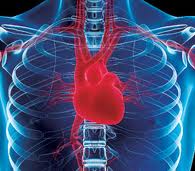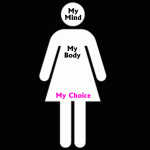 The next time you see your primary care doctor, he or she will have access to updated guidelines and a new electronic tool that can better predict your chances of developing cardiovascular disease, including heart attack and stroke.
The next time you see your primary care doctor, he or she will have access to updated guidelines and a new electronic tool that can better predict your chances of developing cardiovascular disease, including heart attack and stroke.
The guidelines -- released today from the American College of Cardiology and the American Heart Association -- were developed by a work group co-chaired by Donald M. Lloyd-Jones, M.D., senior associate dean, chair and professor of preventive medicine at Northwestern University Feinberg School of Medicine and a cardiologist at Northwestern Memorial Hospital.
Past guidelines, which were last updated in 2004, only included data from Caucasians and focused on predicting one’s short-term (10-year) risk for coronary heart disease events such as a heart attack. Stroke risk was not a factor in the past guidelines. The new guidelines are based on a broader population sample, including African-Americans, and include stroke risk and both short-term and lifetime cardiovascular disease risk.
“We were tending to under treat women and African-Americans during important years in theirs 40s, 50s and 60s, because we weren’t fully capturing their risk,” Lloyd-Jones said. “We are now smarter about identifying risk and treating more people who will benefit.” The new recommended electronic assessment tool, which calculates a patient’s “cardiovascular risk score,” can be integrated into electronic health records or downloaded on a spreadsheet. The tool uses formulas to calculate a score based on factors such as age, race, gender, blood pressure, smoking, diabetes and cholesterol. The tool displays a percentage and a graphic that shows a patient’s individualized 10-year and lifetime risk versus someone his or her age with optimal risk levels.
The group charged with making these new recommendations also looked closely at existing literature on promising new technologies in the field of cardiology, which include CT scans and urine and blood tests to detect possible heart conditions. While the group does not support using these new risk measures routinely, if a doctor and patient are on the fence about treatment after the risk score has been calculated, there are four measures that show the most helpful assessment potential:
- Family history of premature cardiovascular disease in first-degree relatives (before age 55 in your father or 65 in your mother)
- Coronary artery calcium score, which can show the presence of plaque in artery walls
- High-sensitivity C-reactive protein levels (higher levels have been associated with heart attack and stroke)
- Ankle brachial index, the ratio of the blood pressure in the ankle compared to blood pressure in the arm
“These measure are reasonable for some situations, but we are not recommending them for routine assessment, and they should only be used after the risk equation exercise has been performed,” Lloyd-Jones said.
To read the full article and other comments, click here.
Source: Northwestern University News

 According to the American College of Obstetricians and Gynecologists, around 85% of women who menstruate experience one or more
According to the American College of Obstetricians and Gynecologists, around 85% of women who menstruate experience one or more  Today, the Women’s Health Protection Act was introduced in both the U.S Senate and the House of Representatives. It is the first federal legislative response to the flood of state laws designed to restrict women’s access to reproductive health services.
Today, the Women’s Health Protection Act was introduced in both the U.S Senate and the House of Representatives. It is the first federal legislative response to the flood of state laws designed to restrict women’s access to reproductive health services. Hot flashes: most menopausal women have them, and all menopausal women hate them. For one in ten women, hot flashes occur for five years or longer, signicantly affecting multiple aspects of their lives including relationships and sleep. While hormone replacement therapy has largely addressed the issue of hot flashes in many women, other women have sough alternatives. Alternatives including yoga, acupuncture, exercise, and applied relaxation have all been helpful in women undergoing menopause.
Hot flashes: most menopausal women have them, and all menopausal women hate them. For one in ten women, hot flashes occur for five years or longer, signicantly affecting multiple aspects of their lives including relationships and sleep. While hormone replacement therapy has largely addressed the issue of hot flashes in many women, other women have sough alternatives. Alternatives including yoga, acupuncture, exercise, and applied relaxation have all been helpful in women undergoing menopause. As women, sisters, wives, friends, mothers, daughters, and grandmothers, we must make sure that we are doing everything in our power to be at the top of our health, always. We are depended upon to set the healthy example for family and friends around us. Breast cancer and cervical cancer is not something that we can completely prevent or predict on our own, but as women, we do face these two possibilities and it is worth our while to keep our health as updated as possible.
As women, sisters, wives, friends, mothers, daughters, and grandmothers, we must make sure that we are doing everything in our power to be at the top of our health, always. We are depended upon to set the healthy example for family and friends around us. Breast cancer and cervical cancer is not something that we can completely prevent or predict on our own, but as women, we do face these two possibilities and it is worth our while to keep our health as updated as possible. The obstetrical and gynecological manifestation of Crohn's disease is particularly challenging for young women and demands special attention, according to an
The obstetrical and gynecological manifestation of Crohn's disease is particularly challenging for young women and demands special attention, according to an  We all know that having children is expensive, but did you know that having your child in the United States can cost up to triple or quadruple the price as other developed countries? Pregnancy care and delivery costs have nearly tripled in the United States since 1996 and now range anywhere from $4,000 to $45,000. Gerard Anderson, an economist at the Johns Hopkins School of Public Health who specializes in international health costs said, “It’s not primarily that we get a different bundle of services when we have a baby, it’s that we pay individually for each service and pay more for the services we receive.” Paying “more” is an understatement. In the United States, the cumulative cost of nearly four million annual births exceeds $50 billion dollars.
We all know that having children is expensive, but did you know that having your child in the United States can cost up to triple or quadruple the price as other developed countries? Pregnancy care and delivery costs have nearly tripled in the United States since 1996 and now range anywhere from $4,000 to $45,000. Gerard Anderson, an economist at the Johns Hopkins School of Public Health who specializes in international health costs said, “It’s not primarily that we get a different bundle of services when we have a baby, it’s that we pay individually for each service and pay more for the services we receive.” Paying “more” is an understatement. In the United States, the cumulative cost of nearly four million annual births exceeds $50 billion dollars. Hormone therapy can be used to ease the many symptoms of menopause, including night sweats, hot flashes, and mood swings. New research indicates that hormone therapy, specifically estrogen, can also be used towards joint pain.
Hormone therapy can be used to ease the many symptoms of menopause, including night sweats, hot flashes, and mood swings. New research indicates that hormone therapy, specifically estrogen, can also be used towards joint pain. When a woman goes through menopause before age 40, it’s considered
When a woman goes through menopause before age 40, it’s considered